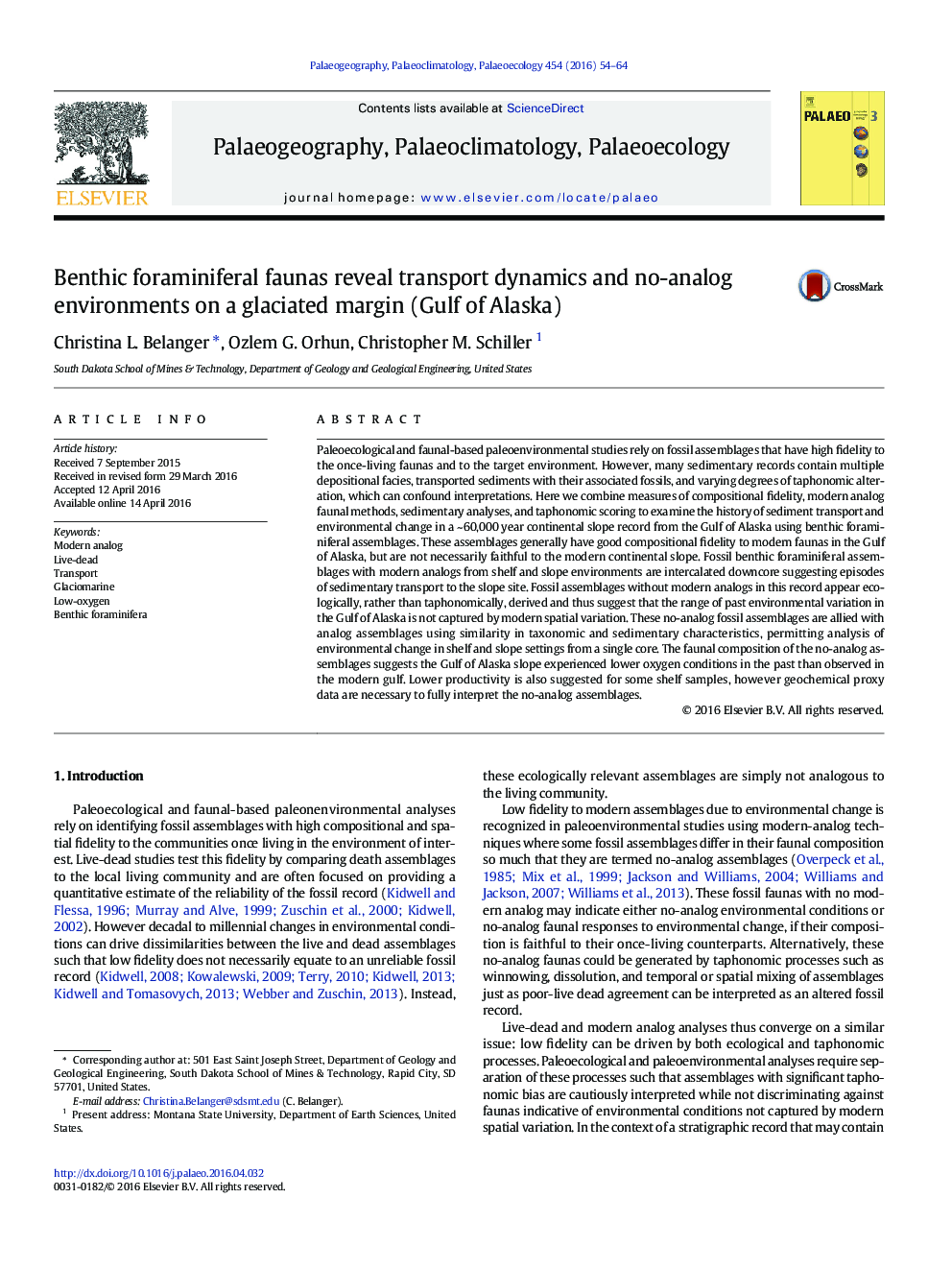| Article ID | Journal | Published Year | Pages | File Type |
|---|---|---|---|---|
| 4465596 | Palaeogeography, Palaeoclimatology, Palaeoecology | 2016 | 11 Pages |
•Gulf of Alaska slope fossil benthic foraminifera assemblages are similar to modern.•Modern analogs suggest sediment transport from the continental shelf.•Taphonomy and sedimentology show distinct faunal sources and no faunal alteration.•No-analog slope assemblages indicate lower past oxygen conditions.•Past environmental variation in the Gulf of Alaska exceeds modern spatial variation.
Paleoecological and faunal-based paleoenvironmental studies rely on fossil assemblages that have high fidelity to the once-living faunas and to the target environment. However, many sedimentary records contain multiple depositional facies, transported sediments with their associated fossils, and varying degrees of taphonomic alteration, which can confound interpretations. Here we combine measures of compositional fidelity, modern analog faunal methods, sedimentary analyses, and taphonomic scoring to examine the history of sediment transport and environmental change in a ~ 60,000 year continental slope record from the Gulf of Alaska using benthic foraminiferal assemblages. These assemblages generally have good compositional fidelity to modern faunas in the Gulf of Alaska, but are not necessarily faithful to the modern continental slope. Fossil benthic foraminiferal assemblages with modern analogs from shelf and slope environments are intercalated downcore suggesting episodes of sedimentary transport to the slope site. Fossil assemblages without modern analogs in this record appear ecologically, rather than taphonomically, derived and thus suggest that the range of past environmental variation in the Gulf of Alaska is not captured by modern spatial variation. These no-analog fossil assemblages are allied with analog assemblages using similarity in taxonomic and sedimentary characteristics, permitting analysis of environmental change in shelf and slope settings from a single core. The faunal composition of the no-analog assemblages suggests the Gulf of Alaska slope experienced lower oxygen conditions in the past than observed in the modern gulf. Lower productivity is also suggested for some shelf samples, however geochemical proxy data are necessary to fully interpret the no-analog assemblages.
